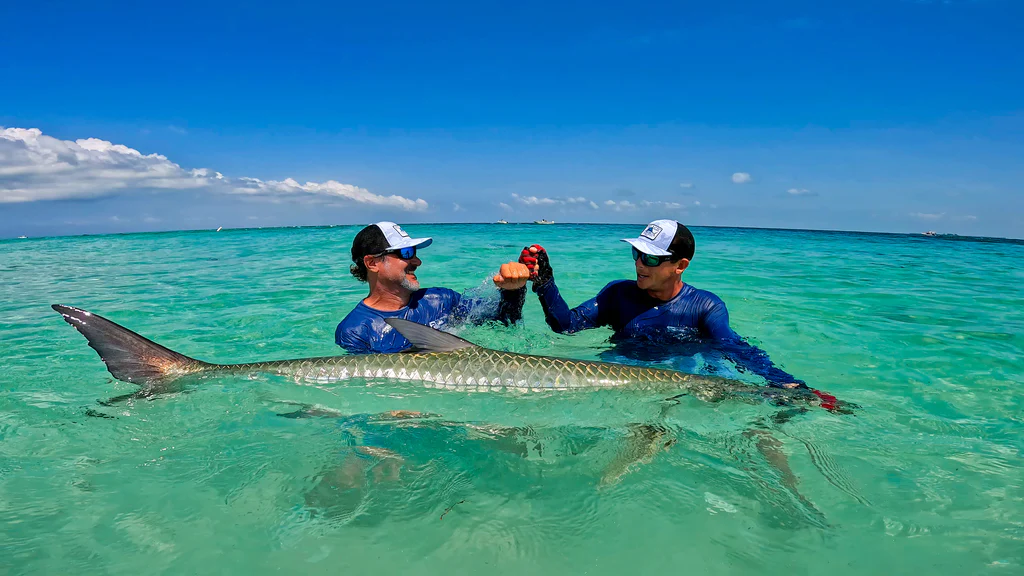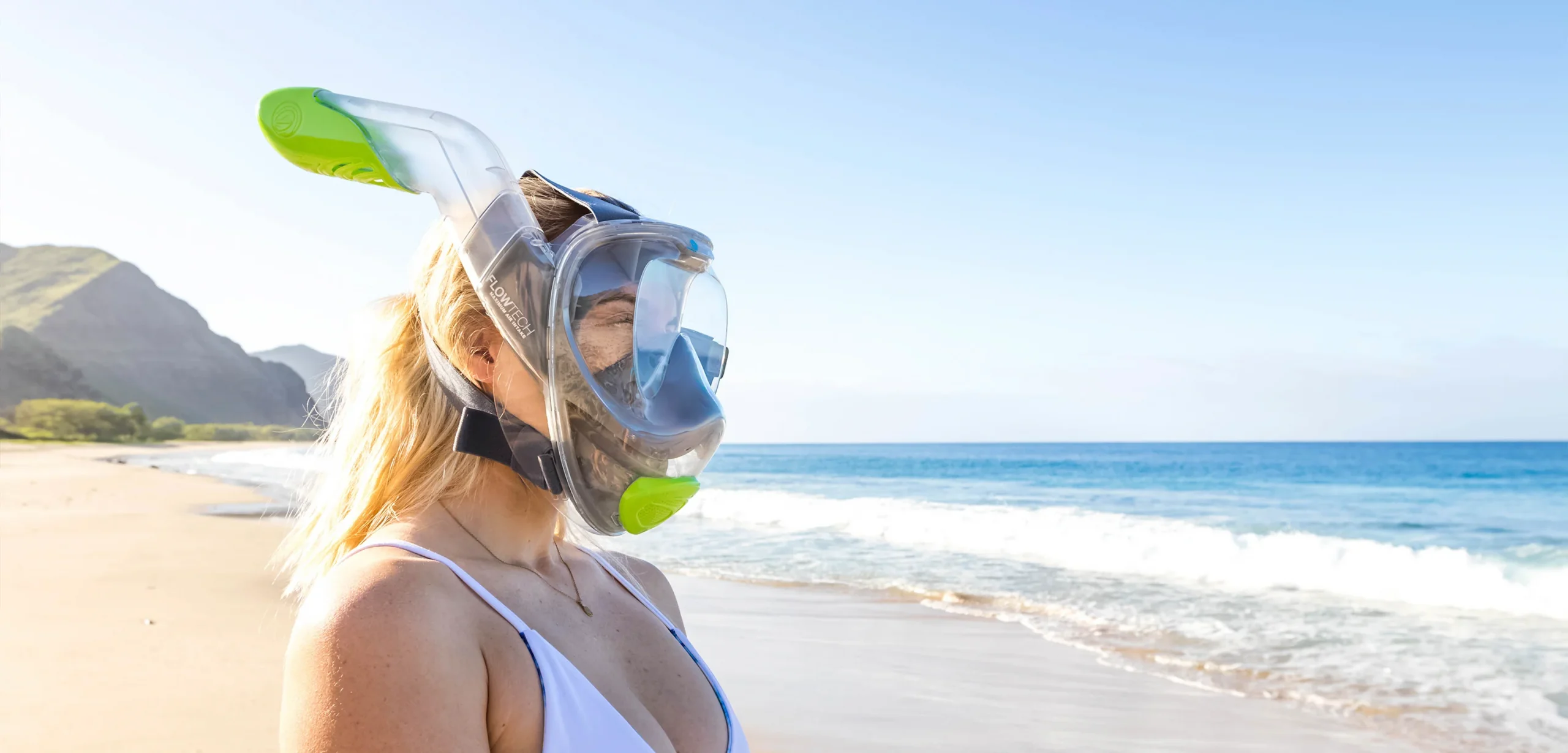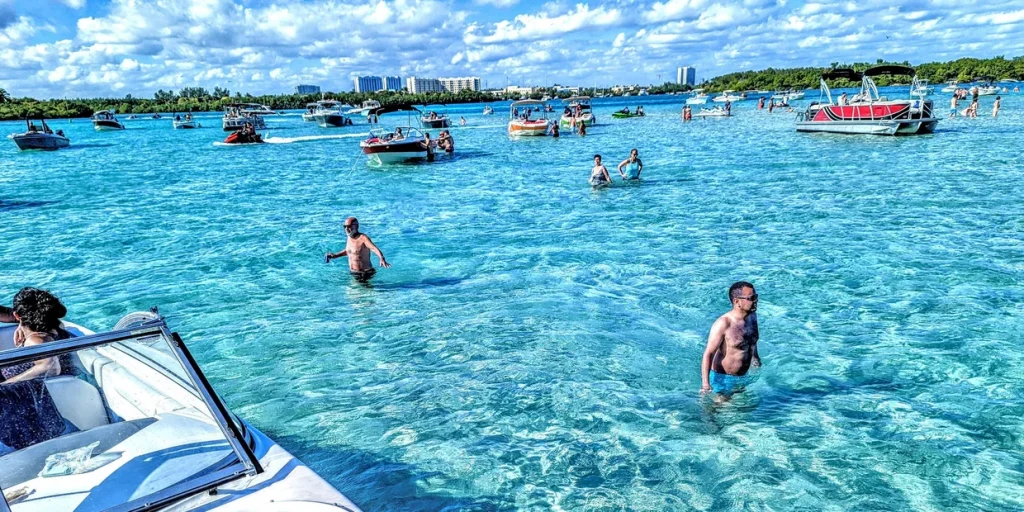Tarpon-Ultimate Fish Guide
Tarpon are fascinating fish known for their large, silvery scales and impressive acrobatic displays when hooked by anglers. They belong to the family Megalopidae and are often sought after by recreational fishermen due to their fighting spirit and the challenge they present. Although tarpon meat is not considered desirable for consumption, the thrill of catching these unique fish makes them a popular target for sport fishing enthusiasts.

These prehistoric fish are found in coastal waters, estuaries, lagoons, and rivers, primarily in tropical and subtropical regions, though they have been reported as far north as Nova Scotia.
Tarpons possess a modified swim bladder, allowing them to breathe air in oxygen-poor environments, making them adaptable to a variety of habitats. Interestingly, around humans, Atlantic tarpon tend to display primarily nocturnal behavior.
Key Takeaways
- Tarpon are popular game fish known for their large, silvery scales and aerial displays when caught
- They inhabit a variety of aquatic environments, including coastal waters, estuaries, lagoons, and rivers
- Adaptability and the ability to breathe air in oxygen-poor environments make tarpons resilient in a range of habitats
Biology and Physical Description
Anatomy of Tarpon
Tarpon are large fish belonging to the genus Megalops. They grow to about 4-8 ft (1.2-2.4 m) long and can weigh anywhere between 60-280 lb (27-127 kg).
Tarpon have a long, slender body and a distinctive dorsal fin that is comprised of soft rays. They also possess an anal fin with soft rays, which further adds to their streamlined appearance.
Distinctive Scales and Color
One of the most eye-catching features of tarpon is their shiny, silvery scales. These scales cover most of their body, except for the head, giving them a reflective appearance. The color of their backs can range from bluish to greenish hues.
Depending on the species, adult Atlantic tarpons can reach lengths of up to 5 or 6 ft. (1.5-1.8 m) and weigh over 350 lbs. (158 kg), while Indo-Pacific tarpons typically grow to about 3 ft. (0.9 m) long.
Respiratory Adaptations
An interesting aspect of tarpon biology is their ability to absorb atmospheric oxygen through their swim bladder. This unique adaptation allows tarpons to survive in environments with low levels of dissolved oxygen, such as bays, estuaries, and coastal waters.
Tarpon are known to regularly break water and gulp air, a behavior that can be observed during their foraging activities.
Habitat and Distribution
Native and Migratory Range
The two species of tarpon, Megalops atlanticus (Atlantic tarpon) and Megalops cyprinoides (Indo-Pacific tarpon), have unique geographical ranges.
The Atlantic tarpon is found along the western Atlantic coast from Virginia to Brazil, including the Gulf of Mexico, Caribbean, and Florida Keys12. In the eastern Atlantic, it occupies areas from Senegal to South Angola1.
The Indo-Pacific tarpon has a presence along the eastern Indian Ocean and the western Pacific Ocean1. Notably, it can also be found in the Panama Canal2.
Habitat Variety
Tarpons inhabit various types of environments, such as coastal waters, estuaries, lagoons, rivers, and open ocean2. They can tolerate a wide range of salinity levels, allowing them to thrive in both freshwater and saltwater systems3.
The Indo-Pacific species is particularly known to frequent freshwater habitats more than its Atlantic counterpart2.
Geographical Spread
Populations of tarpons are extensively fragmented; the Atlantic tarpon mainly inhabits inshore warm regions of the Atlantic Ocean4. Its locations include the Eastern Atlantic range from Senegal to the Congo, the Western Atlantic areas of the Gulf of Mexico, around the Florida Keys, and the West Indies4.
On the other hand, the Indo-Pacific tarpon occupies areas along the eastern Indian Ocean and the western Pacific Ocean1.
Diet and Feeding Habits
Predatory Behavior
Tarpon are opportunistic predators with a penchant for a variety of diet items. Their feeding habits differ greatly depending on their life stage and environment.
Early-stage tarpon larvae, known as Megalops, absorb nutrients directly from seawater1. As they grow, their feeding preferences evolve to include zooplankton, insects, and small fish2.
Adult tarpon feed mostly on fish and crustaceans3. They have unique adaptations, such as a large, upturned mouth capable of gulping down prey with a swift motion. This allows the tarpon to effectively stalk and surprise its prey4.
Feeding Preferences
Tarpon predominantly feed on zooplankton, insects, and small fish during their juvenile stage2. As adults, their favorite prey items include:
- Fish
- Crustaceans (shrimp and crabs)3
Seasonal changes can also influence their feeding habits, with certain prey species being more abundant during specific times of the year5.
Role in the Ecosystem
Being proficient predators, tarpon play a crucial role in maintaining the health and balance of their ecosystems. As top predators, they help regulate population sizes of various species, including fish and invertebrate populations. Their ever-evolving feeding habits help adapt to different environments and fulfill critical ecological roles throughout their life cycle.
Footnotes
- https://www.floridamuseum.ufl.edu/discover-fish/species-profiles/megalops-atlanticus/ ↩
- https://animals.net/tarpon/ ↩ ↩2
- https://animaldiversity.org/accounts/Megalops_atlanticus/ ↩ ↩2
- https://reelrapture.com/tarpon-eating/ ↩
- https://fishingfortarpon.com/2023/06/11/analysis-of-tarpons-feeding-habits-and-dietary-preferences/ ↩
Reproduction and Lifecycle
Mating and Spawning Rituals
Tarpon are fascinating fish with unique breeding and spawning habits. During the late spring and early summer, these fish reproduce in warm, isolated offshore areas1. The females exhibit high fecundity, capable of releasing up to 12 million eggs at once. Tarpon reach sexual maturity once they grow to about 75-125 cm (30-50 in) in length1. Schools of tarpon, comprised of 25 to 200 individuals, migrate offshore to participate in these spawning rituals2.
Development Stages
Tarpon exhibit three distinct development stages, starting with the larval stage1.
After females release their eggs into the water, and males fertilize them externally, the fertilized eggs hatch between two and three days later3. The first stage is the leptocephalus stage, in which larvae are transparent and eel-like1. As they grow and develop, they transform into juveniles and, eventually, adult tarpon.
It takes at least six years for tarpon to reach sexual maturity, affecting their growth and behavior4. When tarpon reach this age, their growth focuses on both length and girth, and they join other mature tarpon in spawning aggregations4.
Population Dynamics
The breeding and spawning season is critical for maintaining tarpon populations. Oceanographic conditions, such as water temperature and currents, can greatly impact the distribution and abundance of juvenile tarpon populations5. Due to their unique reproductive behavior and lengthy development process, conservation efforts and proper fishing practices are essential to ensure the continued survival of tarpon populations.
Footnotes
- https://en.wikipedia.org/wiki/Tarpon ↩ ↩2 ↩3 ↩4
- https://animaldiversity.org/accounts/Megalops_atlanticus/ ↩
- https://animals.net/tarpon/ ↩
- https://www.saltwatersportsman.com/species/fish-species/science-behind-tarpon/ ↩ ↩2
- https://fishingfortarpon.com/2023/06/08/tarpon-understanding-their-unique-breeding-and-spawning-habits/ ↩
Fishing and Conservation
Tarpon as a Game Fish
Tarpon, also known as Megalops atlanticus, are considered an iconic game fish due to their acrobatic leaps and powerful fighting capabilities when hooked. They can grow up to 8 feet long and weigh up to 280 pounds1, making them a highly prized and challenging target for anglers.
As a result, tarpon fishing has developed into a popular sportfish activity, attracting enthusiasts from around the world.
Fishing Methods and Equipment
There are various methods for tarpon fishing, but the key is proper tackle and technique.
Fly-fishing is a well-known approach, utilizing special flies and lightweight tackle to attract the tarpon. Other popular methods include spin casting and live bait fishing, with live or artificial baits tailored to the tarpon's preference in the specific region.
The use of circle hooks2 is recommended over J-hooks to increase the chances of a successful release, as they are less likely to cause injury to the fish. Wetting hands before touching the tarpon and supporting its weight are also essential to handling them.
Conservation Efforts and Regulations
The International Union for Conservation of Nature (IUCN) has listed the Atlantic tarpon as vulnerable, emphasizing the importance of conservation efforts.
The Florida Fish and Wildlife Conservation Commission (FWC) has implemented regulations to help manage tarpon populations while also protecting their habitats3.
As part of these regulations, anglers need to obtain a specific tarpon tag to legally target and harvest the fish.
Catch and release practices are strongly encouraged for tarpon to reduce stress on the fish and increase their chances of survival after release. Using proper gear, methods, and handling techniques, as mentioned earlier, plays a crucial role in preserving these game fish for future generations.
In addition to the FWC's efforts, there are numerous organizations dedicated to tarpon conservation. These groups aim to raise awareness about the importance of protecting this valuable fish species, ensuring that tarpon remains a strong and viable fishery for years to come.
Footnotes
- Tarpon Fishing: Tips and Techniques for a Successful Catch ↩
- Hooked On Tarpon: Fishing Guide To Catching Giants! ↩
- Tarpon In Florida: The Local Regulations And Conservation Efforts ↩
Threats and Environmental Concerns
Natural Predators
One major threat to tarpon populations is their susceptibility to predation by apex predators, primarily sharks.
Fishing guides along the Gulf of Mexico and southeastern US have reported an increasing number of shark encounters leading to the loss of tarpon during angling activities. These encounters are concerning for the overall tarpon population, as they may contribute to their decline.
Human Impact
Tarpon populations also face threats due to human activities such as overfishing, habitat loss, and climate change.
According to research by Science Daily, tarpon populations along the Atlantic coast require different conservation priorities compared to those in the Gulf, emphasizing the importance of effective regional management strategies.
Furthermore, habitat loss due to coastal development and urbanization poses a crucial threat to these ecosystem engineers. As tarpon populations decline, their ability to maintain stability within the ecosystem may also weaken. Climate change affects tarpon populations by altering their available habitats and influencing their migratory patterns.
Conservation Status
Although the International Union for Conservation of Nature (IUCN) has not assigned a specific status to tarpon, local organizations recognize the importance of protecting this iconic game fish.
Conservation efforts such as habitat restoration programs, community engagement initiatives, and sustainable angling practices have been implemented to safeguard tarpon populations and their ecosystems, mainly in Atlantic and Gulf regions[^3^].
Responsible harvest practices, such as catch-and-release fishing, are essential for maintaining tarpon populations and ensuring long-term economic benefits.
It is essential to follow regional and international guidelines to mitigate the impact on tarpon populations and ensure ongoing conservation efforts are effective in preserving these remarkable fish for future generations.
Cultural and Economic Importance
Tarpon in Recreational Fishing
Tarpon (Megalops atlanticus) are a highly prized game fish due to their impressive size, strength, and aerial acrobatics. In recreational fishing, they are often targeted for catch and release. This practice helps preserve the population and contributes to the sustainability of the fishery.
Tarpon, together with bonefish and ladyfish, form an important component of the coastal fishing ecosystem in regions such as the Gulf of Mexico and the waters of Belize.
Tarpon in Local Economies
The economic impact of tarpon fishing is substantial. For instance, the recreational fishery in Belize generates an annual economic impact of over $50 million USD, supporting thousands of jobs and contributing to the preservation of local ecosystems.
Tarpon protection is crucial for the sustained viability of the industry, as their slow growth rate and vulnerability to habitat degradation could jeopardize the economic benefits they bring to these regions.
Furthermore, tarpon's importance in the fishing tourism industry ensures that local communities continue to prioritize their conservation efforts.
Cultural Significance
Tarpon have played an integral role in many cultures for centuries. Historically, they were valued as a food source, and their large silver scales were commonly used in folk crafts.
While consuming tarpon as a delicacy is now less common, their significance goes beyond their culinary or ornamental uses. Tarpon have become a symbol of the ocean's bounty and a testament to the skill of the anglers who pursue them.
As a result, they are also cherished as pets in some coastal communities.
Frequently Asked Questions
What is the typical size range for tarpon?
Tarpon are generally large fish, with sizes ranging from about 4 to 8 feet in length and weights of up to 280 pounds.
The smaller tarpon, known as juveniles, are typically under 3 feet in length. Adult tarpon can be quite impressive in size and are considered to be strong swimmers.
Can tarpon be considered dangerous to humans?
Tarpon are not known to be aggressive or dangerous to humans. They are primarily focused on their natural prey, including smaller fish and crustaceans.
While tarpon jump and thrash when hooked on a line, there have been no documented incidents of tarpon causing harm to people.
What specific regulations are in place for tarpon fishing?
Tarpon fishing is regulated to protect the species.
In Florida, for instance, tarpon over 40 inches must remain in the water unless pursuing a state or world record with a tarpon tag. These tags are limited to one per person per year, with exceptions for charter boat captains.
Where do tarpon typically inhabit?
Tarpon are commonly found in the coastal waters, estuaries, lagoons, and rivers of the tropical and subtropical regions of the Atlantic Ocean. They are saltwater fish, but they can also be found in freshwater environments.
Tarpons inhabit areas close to shore and are known to migrate seasonally to feed and spawn.
What does a tarpon's diet consist of?
Tarpon mainly feed on mid-water creatures like marine catfish, mullets, sardines, and pinfish. Juvenile tarpon eat smaller fish and large invertebrates like crabs and shrimp. As they grow, their diet shifts to include more substantial prey.
Why is catching tarpon considered challenging?
Catching tarpon is considered an art-form because these fish are known for their strength, acrobatic leaps, and stubbornness once hooked.
Anglers find it challenging to bring in tarpon, as they have a hard, bony mouth, making it difficult to securely set the hook.
The tarpon's impressive speed and powerful bursts add to the excitement and difficulty of landing these fish.
Charlie is Editor-in-Chief of Sea Magazine







